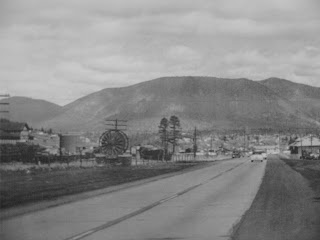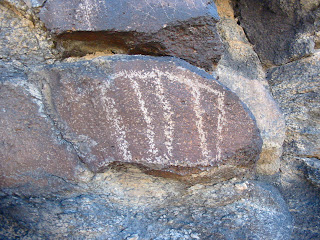 The morning begins at 5:30, when I get up to drive Mom to the airport. We've been together for eleven days, through Death Valley, northern Arizona, southern Utah, and now Las Vegas. It's been a great trip. But now she has to return to Iowa, and I must return Susan & Tools' car to them in Oakland.
The morning begins at 5:30, when I get up to drive Mom to the airport. We've been together for eleven days, through Death Valley, northern Arizona, southern Utah, and now Las Vegas. It's been a great trip. But now she has to return to Iowa, and I must return Susan & Tools' car to them in Oakland. So now I'm headed west to the Pacific. The first part of this journey, from Las Vegas to Death Valley, will follow an old route called the Old Spanish Trail.
The trail--following ancient paths blazed by Utes, Paiutes and Mojaves--was the primary trade route across the Mojave Desert from the 1820s through the 1850s, extending about 1,200 miles from Santa Fe to Los Angeles.
Back then, trail users included traders, trappers, slavers, horse thieves, military troops and adventurers. Traders took blankets from Santa Fe to California and returned with horses bought and stolen from the west coast. Indian tribes in Utah and Nevada sold their own and other tribal members as slaves in return for European goods.
I picked up the trail heading west on Tropicana Avenue in Las Vegas. Here and there one sees a few references to this historic route.


Finally, about 20 miles from the fantasy world of the Las Vegas Strip, I put the fastest-growing city in America behind me. Now I'm back in the real world...the Basin & Range, the Mojave Desert.


N35.88422 W116.06318
The Lost Forty-Niners passed this way before becoming, well...lost in Death Valley in December 1849. Theirs in an interesting tale of impatience, greed and blunder. Click the link to find out more.

At Tecopa I reach Hwy. 127, the north-south road where I take my leave of the Old Spanish Trail. I am about to enter Death Valley National Park, for the second time on this journey.
Next: Bad and Good Water



























